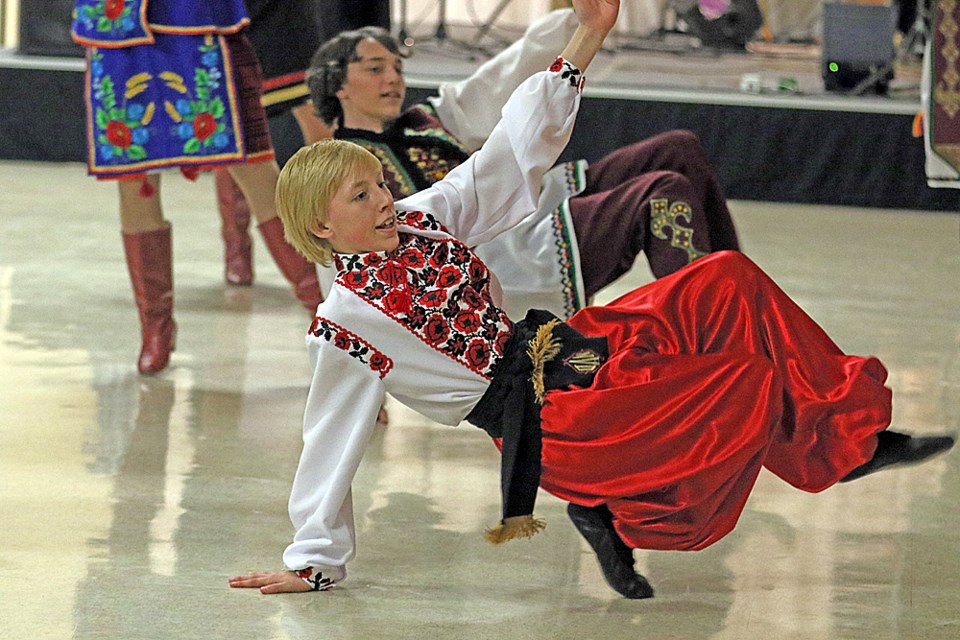As Russia invades Ukraine, descendants of the Ukrainian diaspora are watching with concern to what’s happening to their ancestral homeland.
Canada has one of the largest populations of Ukrainians outside Ukraine. In 2016, there were 1.36 million people in Canada that said they had Ukrainian ancestry, about four per cent of the population.
Of those, almost 700,000 live in the three Prairie provinces, where they make up around 11 per cent of the population.
Who were the first Ukrainian settlers in Canada?
According to official sources, the first Ukrainian settlers to come to Canada were Ivan Pylypiw and Wasyl Eleniak in 1891.
At that time, what’s now the country of Ukraine was divided between Austria-Hungary in the west and the Russian Empire in the east.
Pylypiw and Eleniak were from what was then called Galicia, located in the Austro-Hungarian part of Ukraine. According to , they were the start of a wave of 150,000 immigrants that mostly came from Galicia and another part of Austro-Hungarian Ukraine called Bukovina that lasted until 1914.
Pylypiw returned to Ukraine in 1892 to bring his family over.
“People asked me where I had been and what I had seen,” Pylypiw told William A. Czumer, who later published the interview in his book Recollections About the Life of the First Ukrainian Settlers in Canada. “I told them about Canada and said, ‘Run, run from here, because here you have nothing, but there you’ll have land free and be your own master.’”
Why did Ukrainians choose the Prairie provinces?
The Ukrainian immigrants between 1891 and 1914 were attracted by the promise of free land.
“There was land everywhere; land wherever you went, all empty. Just take a plough and start ploughing. Not like in the Old Country, where people worked small, narrow strips or didn’t even have a bit of garden,” Pylypiw said.
The federal government was trying to attract immigrants to populate the prairies. Clifford Sifton, the federal interior minister from 1896 to 1905, saw Eastern Europeans like Ukrainians, Poles and Russians as the perfect immigrants for prairie conditions.
“I think that a stalwart peasant in a sheepskin coat, born to the soil, whose forefathers have been farmers for ten generations, with a stout wife and a half-dozen children, is good quality,” he said in 1922, looking back in retrospect.
Most of the immigrants settled in the parkland regions of Saskatchewan, Manitoba and Alberta, where the forests of the north melded with the prairies of the south. Their old homes in Galicia and Bukovina were semi-wooded. According to the Canadian Encyclopedia, the system in the old country required farmers to pay their landlords for anything obtained from the forests, including wood.
The Ukrainians tended to cluster together and by 1914 a series of informal Ukrainian blocs of varying size crossed the three prairie provinces in a belt from southeastern Manitoba to just outside Edmonton, said the .
What ended the first wave of Ukrainian immigration?
The breakout of the First World War saw immigration come to a halt. Unnaturalized Ukrainians from Austria-Hungary were seen as the enemy.
According to the , approximately 80,000 Ukrainian Canadians were forced to register as enemy aliens," report to the police on a regular basis, and carry government-issued identity papers at all times. Those naturalized for less than 15 years couldn’t vote. Another 5,000 Ukrainians, mostly men, were placed in concentration camps where they endured hunger and forced labour.
Did more Ukrainians come to Canada?
The end of the First World War saw the fall of Austria-Hungary and the Russian Empire. Ukraine was split between the Soviet Union, Poland, Czechoslovakia and Romania.
The second wave of immigration between the world wars saw 70,000 Ukrainians come to Canada, according to the Canadian Encyclopedia. They included war veterans, intellectuals and professionals, as well as rural farmers.
The end of the Second World War saw the Soviet Union take the rest of modern Ukraine. A third wave of refugees saw 34,000 Ukrainians come to Canada between 1947 and 1954.
Ukraine became independent in 1991. From 2001 to 2016, Canada welcomed 40,015 new permanent residents from Ukraine.




